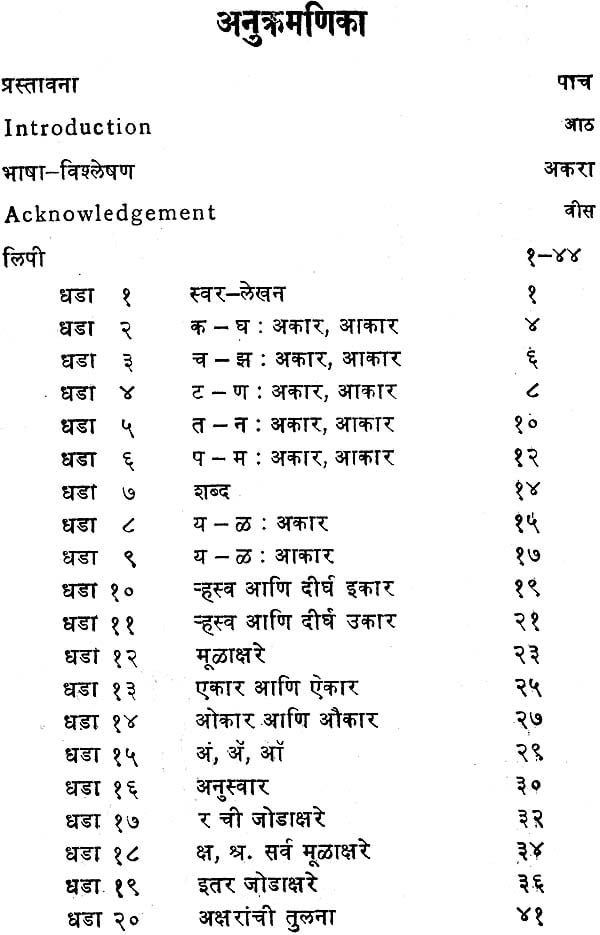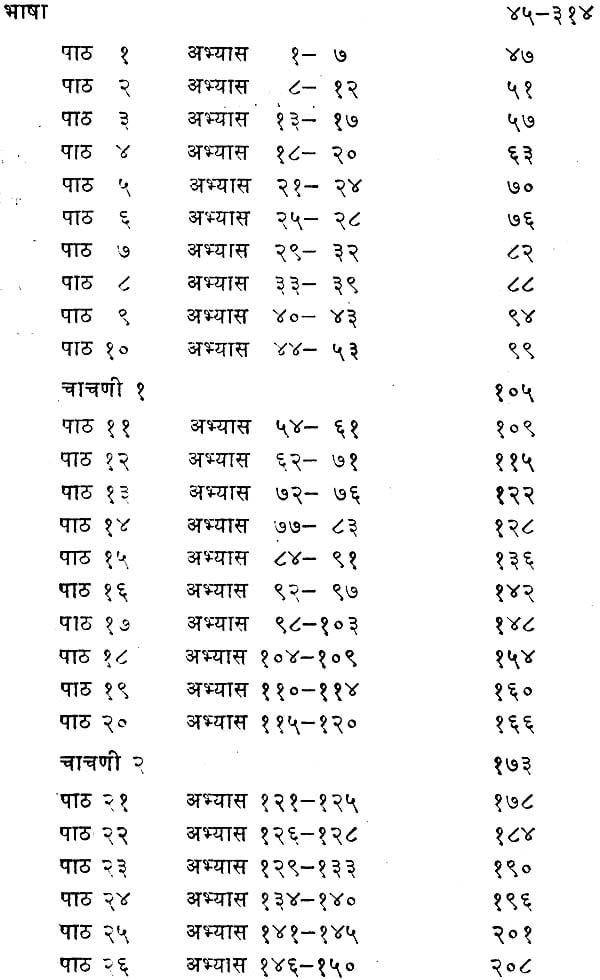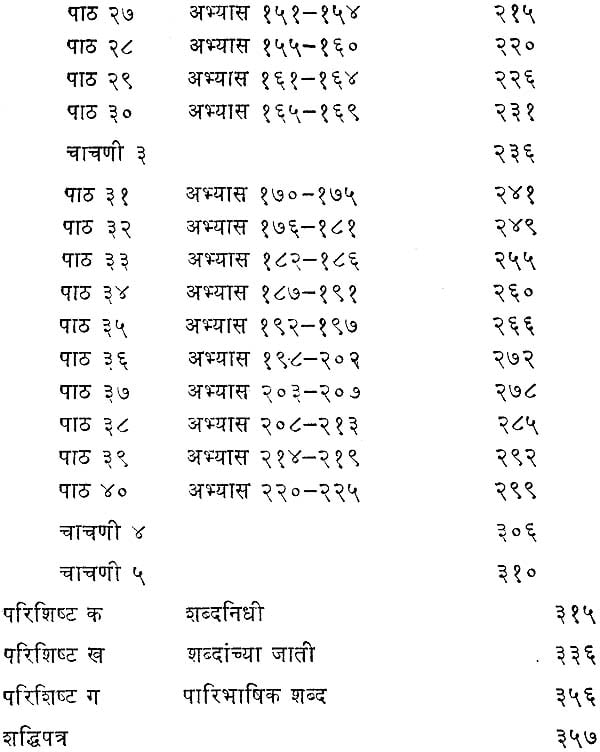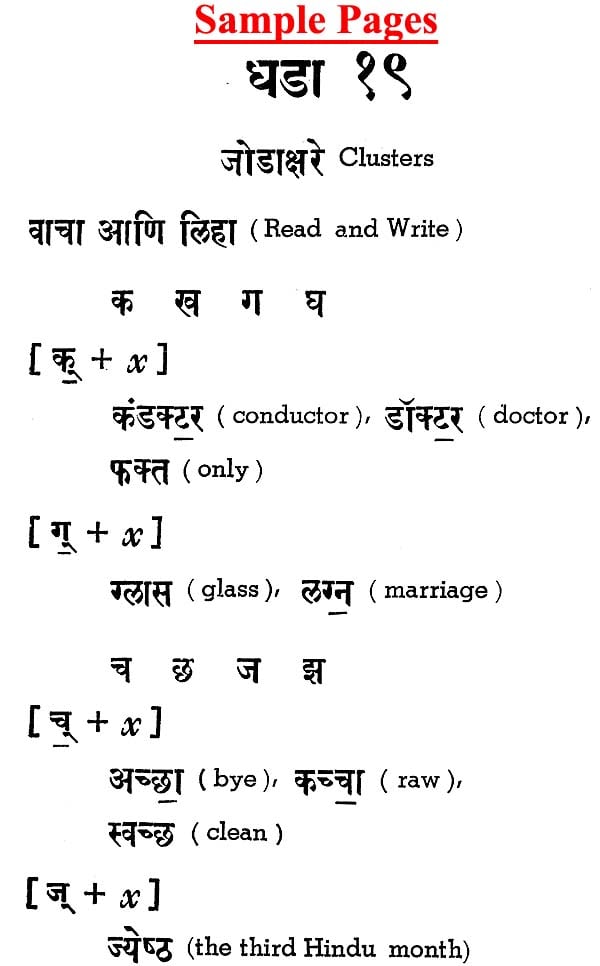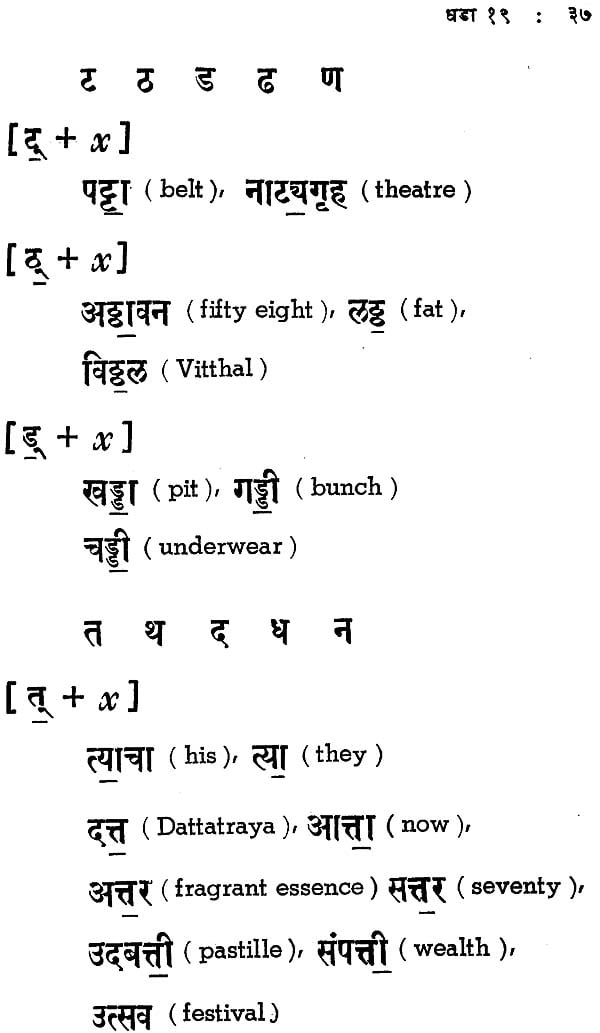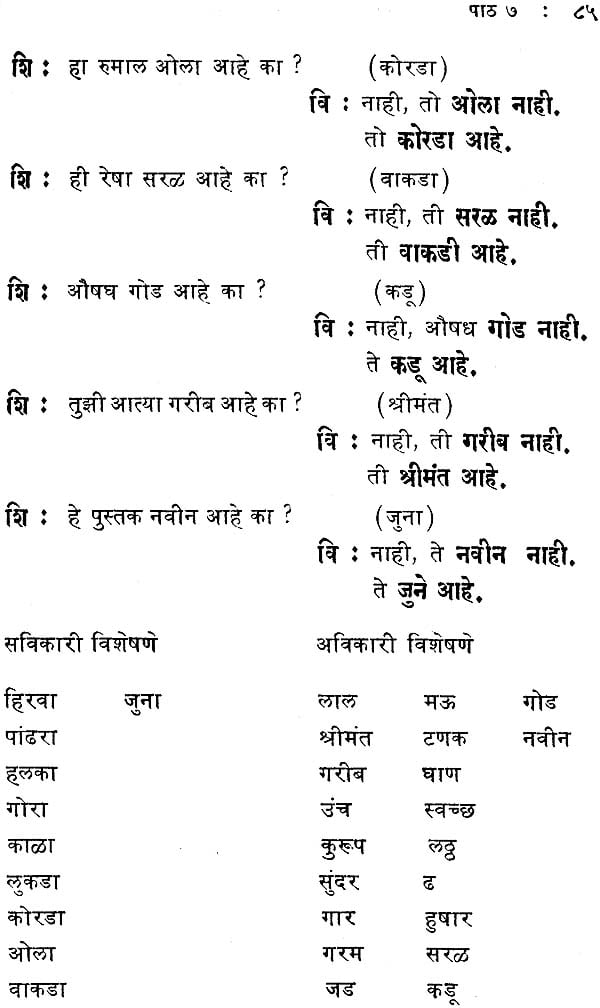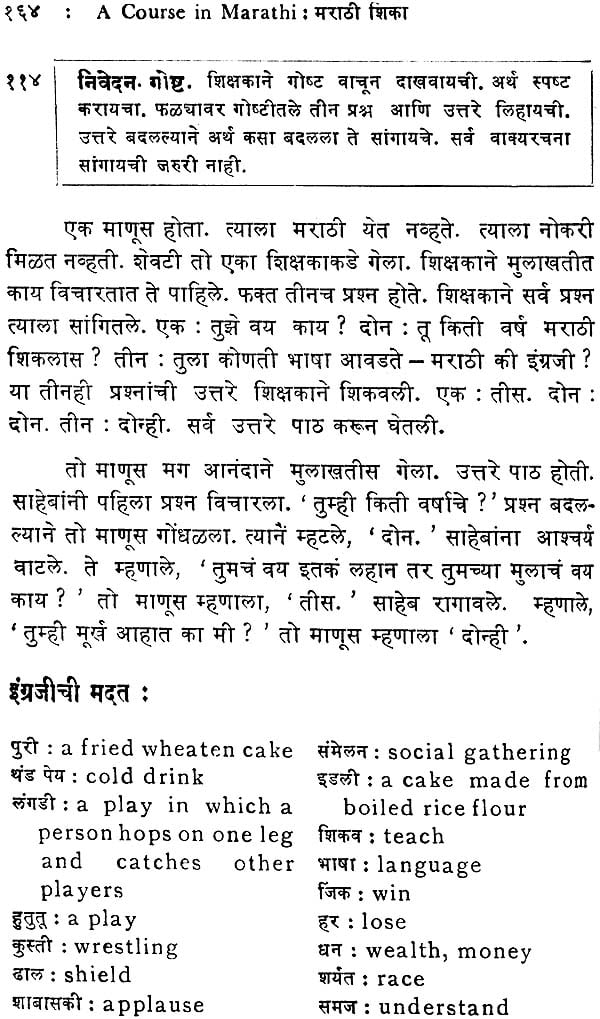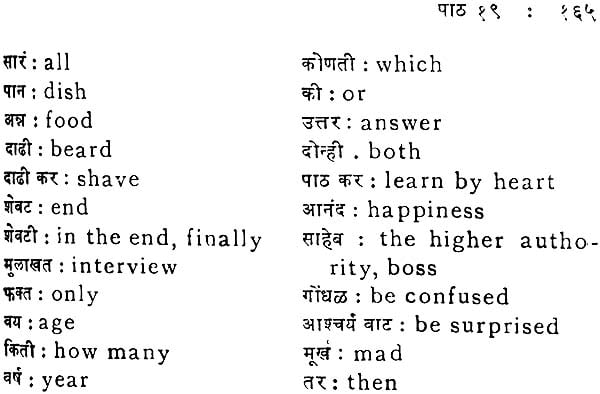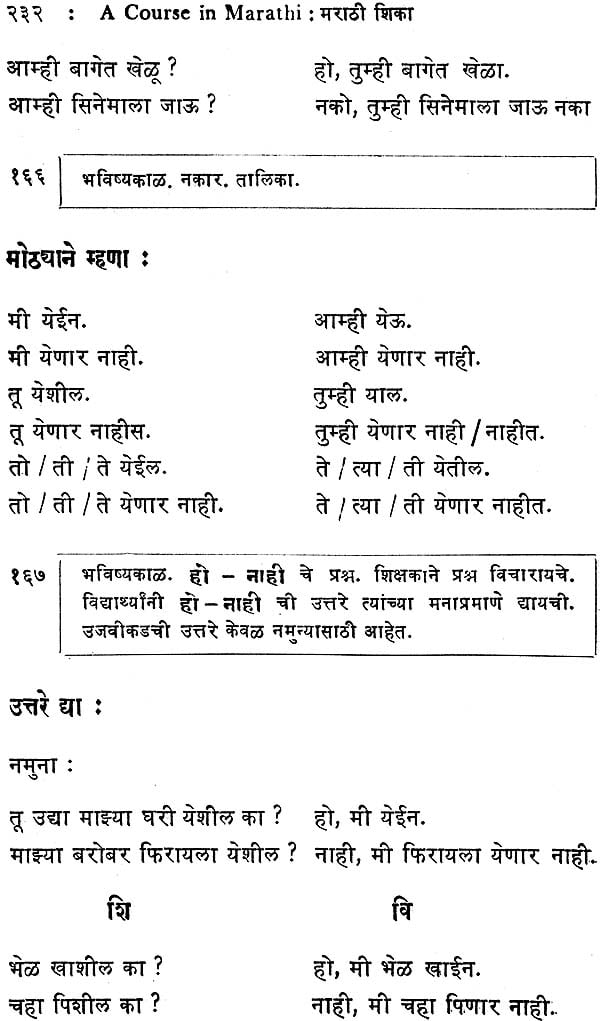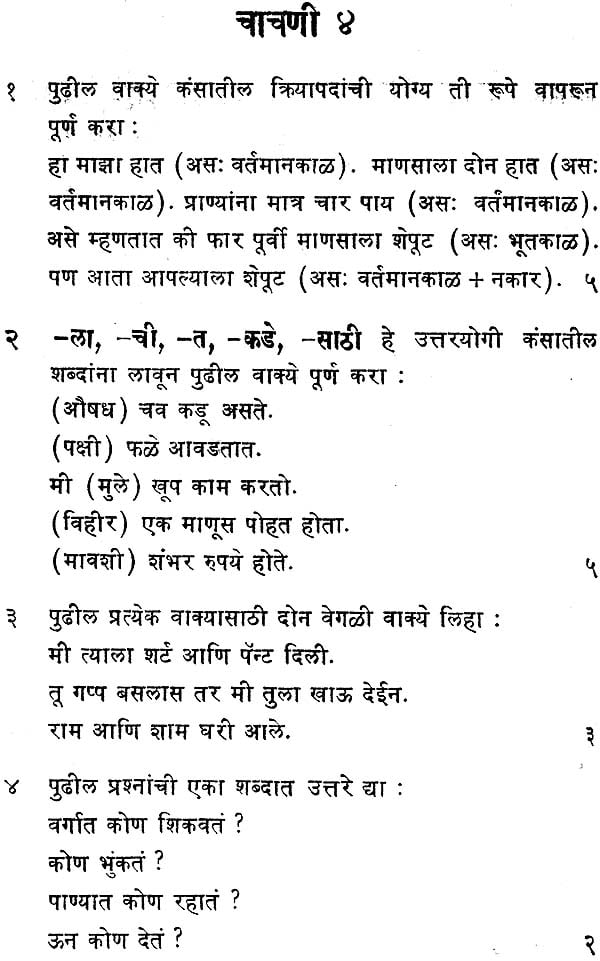
मराठी शिक्षा: Learn Marathi - A Course in Marathi as a Second Language (An Old and Rare Book)
Book Specification
| Item Code: | NZK860 |
| Author: | रमेश वा. धोंगडे और उषा रानडे (R. V. Dhongde and Usha Ranade) |
| Publisher: | Deccan College Postgraduate and Research Institute |
| Language: | Marathi |
| Edition: | 1988 |
| Pages: | 381 |
| Cover: | Paperback |
| Other Details | 8.5 inch X 5.5 inch |
| Weight | 490 gm |
Book Description
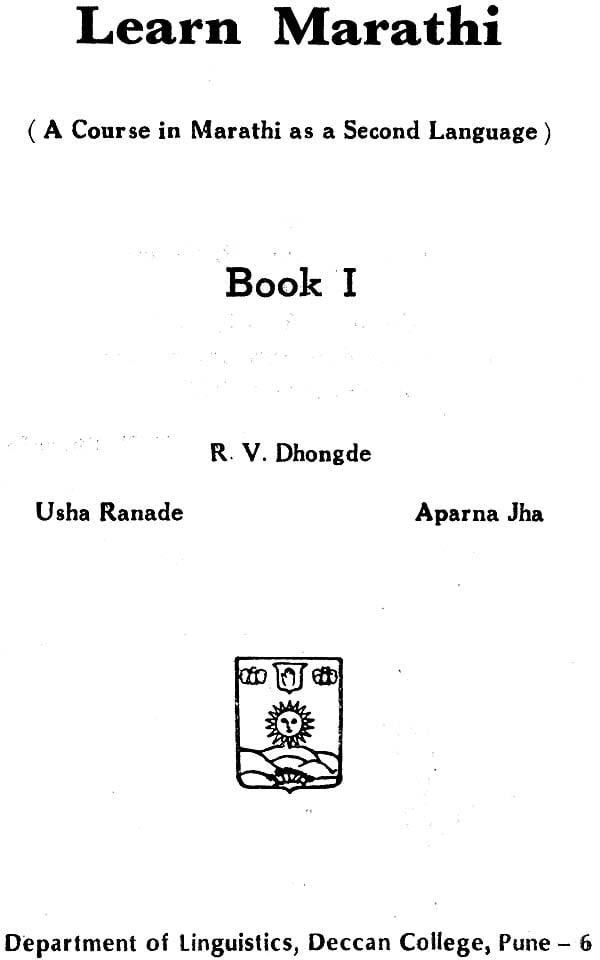
This course is meant for those who are not native speakers of Marathi but who want to learn it as a Second Language.
A course in Marathi as Second Language was organized in Deccan College during 1984-85. The Present course is a revised, expanded, and modified version of it.
This course is for beginners. Since it is assumed that the learner knows the Devanagari script, at least at the beginning, he would require the help of a teacher.
This course is to be used in a class –room. Such courses are very few in Marathi. While preparing it, Marathi Linguistics and the principles of language teaching and perhaps, this only course in Marathi. Since we ourselves have used this course, we are sure of its utility.
Trained teachers are required for teaching any language. They are not, however, always available. Because one can speak a language, it does not necessarily mean that he can teach it. Many foreign learners of Marathi, however, depend on any speakers of Marathi for learning the language. In such a situation the untrained teachers does not know what, how any why to teach. Following our course as per our instructions would certainly solve these problems. We have given adequate instructions for the teachers as well as for the student’s instructions for the teachers as well as for the students everywhere. Each lesson contains a variety of exercises. Before each exercise, clear instructions are given in the squares. The teaching point also is stated. This is followed by instructions about the use of certain words, sentences and objects the teachers should use. Answers expected from the students are stated.
In the class room the student need not use this book, But for practice, and when learning on one’s own, he should answer the question and immediately check if the answer is correct or not.
As we do not want to eliminate the teacher totally and as translation method has its own disadvantages, we have not translated all the expressions in this course. When the course was actually used, we never felt its necessity. However, to help in the situation where the teacher is untrained, we have given the meanings of some key-Marathi words into English at the end of every lesson.
The syllabus that is given at the beginning will show a traded list of teaching of teaching items that are based on the linguistic analysts of Marathi. For each item, its lesson number and exercise number is stated. In the syllabus we have used the technical vocabulary of Marathi linguistics. In order that the teacher or the student should get easily used to it, equivalent to English terms are given in the third appendix. Script lessons are given separately before the course begins. We have tried our best to use words in them that are included in the course-vocabulary. The learner is advised to take help of the teacher for these script-lessons.
The course consists of forty lessons-two hundred and twenty five exercises. The amount of time necessary for each exercise will vary according to the ability of the learner, but on an average, the course can be completed in eighty periods each consisting of forty-five minutes. For each exercise the mode is specified - written, spoken written and spoken. It is essential that the teacher and the learner follow the specified mode. The exercises are to be used as they are; the teacher should not add any new items to them. Additions are allowed at very few places. Taking into account the progress of the learner, the teacher is free to decide how much time he should spend on an exercise and how often he should repeat it.
At the end of each tenth lesson, there is a test. The four tests will reveal how much is learnt by the learner. If he scores less than fifty per cent of marks, he should do all the ten lessons again. At the end there is a comprehensive test. In this fifth test, the learner should score at least sixty percent of marks.
In the two appendices given at the end, the first contains a list of words used this course. The list consists of about 1200 words. It is necessary to control the vocabulary in any language learning programme. Therefore the teacher should not use words outside the controlled vocabulary. Against every words, its part of speech is indicated. In the second appendix, the vocabulary is grouped according to the parts of speech. This will help the learner using the language independently.
This is the first book in the series. We do not claim that we have exhausted all the teaching items here; that is not our intention either. However, this course will give the learner basic equipment that is necessary in using Marathi in everyday life. We intend to bring out more books. The three books together will make a comprehensive course in Marathi.
